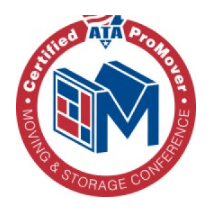How to Move a House from One Location to Another: Planning to Completion

Relocating an entire house might seem like something out of a movie, but this remarkable feat of engineering happens more often than you’d think. From preserving historic mansions to saving beloved family homes from coastal erosion, house moving represents the intersection of cutting-edge engineering and practical problem-solving.
With project costs typically ranging from $18,000 to $100,000, this specialized service transforms what many consider impossible into a precise, methodical process.
The success of any house-moving project hinges on careful, systematic planning and professional expertise. Our century of experience in structural relocation has shown that each project presents unique challenges – from handling complex permit requirements to orchestrating the precise coordination of hydraulic lifting systems.
The process demands careful consideration of structural integrity, route planning, and coordination with multiple authorities to ensure a seamless transition.
Modern engineering techniques have revolutionized the way we approach house moving. Steel beam supports, sophisticated hydraulic systems, and advanced route-planning technology work in concert to protect your investment throughout the journey.
These innovations, combined with proper site preparation and utility coordination, make it possible to transport structures of various sizes and architectural styles to their new locations safely and efficiently.
For homeowners weighing their options, understanding the complete scope of a house-moving project is essential. This detailed guide explores everything from initial feasibility assessments and legal requirements to the intricate engineering methods that make structural relocation possible.
We’ll uncover the critical factors that determine success, helping you make informed decisions about preserving or relocating your valuable property.
Initial Assessment and Planning
The foundation of a successful house move rests on two critical pillars: thorough assessment and detailed planning. With 50+ years of experience moving homes across America, we’ve developed an all-inclusive strategy that ensures your home reaches its destination safely.
Evaluating House Moving Feasibility
A successful house move starts with a detailed structural evaluation – think of it as a complete physical for your home. Here’s what our professional engineers examine:
- Structural integrity of walls, beams, and support systems
- Foundation condition and stability
- Overall building durability
Houses with solid bones and minimal wear typically make excellent candidates for relocation. Our team conducts precise weight and size calculations to determine the exact equipment needed – from specialized dollies to hydraulic jacking systems rated for your home’s specific requirements.
Route planning is equally crucial. Picture your house’s journey from point A to point B – we analyze every inch of that path, including:
- Road width measurements
- Bridge weight capacities
- Overhead clearance requirements
- Potential obstacles (utility lines, tree branches)
- Required permits for temporary infrastructure modifications
Cost Analysis and Budgeting
House-moving investments typically range from $18,000 to $100,000, with several factors influencing the final price tag. Use an online tool to calculate your moving costs and create your master financial blueprint, which includes:
Primary Costs:
-
- Base moving expenses
- Equipment and labor
- Transportation logistics
Additional Considerations:
- Utility disconnection/reconnection fees
- Temporary storage (if needed)
- New foundation preparation
- Structural reinforcement work
- Municipal permits and inspections
Insurance coverage deserves special attention. Standard homeowner’s policies usually don’t cover house moving – that’s why we work with specialized providers to ensure complete protection during every phase of relocation.
Professional Team Assembly
Understanding the various types of moving services is essential when assembling your project team. Here’s the fundamental team that makes it happen:
House Moving Specialists:
- Provide technical expertise through professional home moving services
- Supply specialized equipment
- Manage physical relocation logistics
Supporting Professionals:
- Structural engineers who monitor building integrity
- Architects ensuring proper connection at the new location
- General contractors coordinating site preparation
- Subcontractors handling specific technical aspects
Each team member plays a crucial role in maintaining project timelines and quality standards. With careful coordination, they address challenges proactively, ensuring your home’s safe journey to its new location.
Legal and Administrative Requirements
Moving a house involves more than just the physical relocation – it’s a carefully orchestrated process that requires precise documentation and timing. Here’s your thorough guide to managing the essential legal and administrative requirements.
Required Permits and Documentation
Building permits serve as your foundation for a legal house move. You’ll need permits for both your current location and your destination site – these aren’t just formalities, they’re your guarantee that the project meets all local building codes and zoning regulations. These permits typically cover:
- Foundation work specifications
- Structural modification requirements
- Occupancy standards at the new location
The transportation permit process adds another layer of complexity. Since your house qualifies as an oversized load, you’ll need specialized permits for every jurisdiction along your planned route.
Many areas restrict oversized load movement to specific times – typically during off-peak traffic hours between 9 PM and 5 AM. Working with seasoned house moving professionals makes understanding these requirements much easier.
Local authorities often require additional approvals beyond standard permits. Depending on your location, this might include:
- Historical preservation board clearance
- Neighborhood association approval
- Environmental protection agency permits
- Public hearing participation
- Special council authorization for cross-jurisdiction moves
Insurance Coverage
Standard homeowner’s insurance won’t cover a house in transit – that’s where specialized moving insurance becomes crucial. Think of it as a safety net protecting your investment throughout every phase of the relocation process.
A robust insurance package should include these essential components:
- Structural protection during lifting operations
- Detailed coverage for the actual transport
- Liability protection for neighboring properties
- Worker’s compensation for all on-site professionals
- Full transit insurance from start to finish
Utility Company Coordination
Successful utility coordination requires precise timing and clear communication with multiple service providers. The process starts with methodically disconnecting services at your current location – electricity, gas, water, sewage, and telecommunications all need proper shutdown procedures before the first beam is lifted.
Professional house movers maintain strong relationships with utility providers, ensuring smooth disconnection and reconnection processes. This orchestrated approach includes:
- Creating detailed shutdown schedules
- Coordinating multiple utility companies
- Planning service restoration at the new location
- Managing potential system upgrades
- Addressing special installation requirements
Each utility transition requires careful planning to minimize disruption. The goal is to have essential services ready at your new location when your house arrives, creating a seamless transition from the old site to the new one. This might involve upgrading existing systems or installing new utility connections to meet current building codes and your specific needs.
Pre-Move Preparations
Preparing for a move is like directing an ensemble – every element needs to work in synchronized coordination. Here’s your detailed guide to preparing for this intricate but manageable process.
Site Preparation
Original Location Assessment
Our engineering team starts with a detailed site evaluation that goes far beyond basic measurements. We analyze soil composition, identify underground utilities, and create a precise 3D documentation of your home’s current position.
This thorough assessment, typically taking 2-3 days, helps us develop a customized lifting strategy that protects your home’s structural integrity.
New Location Preparation
Just as crucial as the departure point, your home’s destination needs careful evaluation. Our specialists examine:
- Ground stability and load-bearing capacity
- Natural drainage patterns and potential water issues
- Access routes for heavy equipment
- Local zoning requirements and building codes
Foundation Requirements
A rock-solid foundation is essential for your home’s future stability. The process involves:
- Precise excavation to exact depth specifications
- Professional-grade soil compaction testing
- Installation of reinforced concrete footings
- Custom foundation design matching your home’s exact dimensions
House Preparation Steps
Interior Securing
Think of interior preparation as creating a protective cocoon for your home’s features. Our team:
- Installs steel cross-bracing to prevent wall movement
- Secures built-in cabinets and fixtures with industrial-grade strapping
- Places protective barriers on floors and doorways
- Documents the location of every structural element
Exterior Reinforcement
The exterior requires strategic reinforcement to handle the stresses of transport. We implement:
- Heavy-duty steel beam installation at key support points
- Advanced bracing systems to prevent structural flex
- Specialized protection for windows and decorative elements
- Weather-resistant wrapping for sensitive areas
Utility Disconnection Process
Safe utility disconnection follows a precise 48-hour sequence:
- Documentation of all connection points
- Coordination with local utility providers
- Professional capping and securing of all systems
- Final safety verification before transport
Route Planning
Obstacle Identification
Our route planning team conducts multiple surveys to identify and address potential challenges:
- Bridge clearance measurements
- Power line height verification
- Tree branch trimming requirements
- Road width and turning radius calculations
Traffic Management Plan
Creating minimal community impact requires strategic timing and coordination:
- Partnership with local traffic authorities
- Scheduled moves during the 2 AM – 5 AM window
- Designated escort vehicle positioning
- Clear detour route communication
Emergency Protocols
Being prepared means having backup plans ready for immediate implementation:
- 24/7 emergency response team availability
- Multiple alternate route options
- Backup equipment stationed at strategic points
- Direct communication channels with all team members
Each preparation phase builds on the previous one, creating a secure foundation for your home’s journey. With over 100 checkpoints and multiple safety redundancies, we transform this complex project into a smooth, well-orchestrated operation that protects your valuable investment.
The Moving Process
House moving is a remarkable integration of engineering precision and time-tested techniques. Let’s explore how we transform this complex operation into a carefully orchestrated journey for your home.
House Lifting Techniques
Steel Beam Installation
The foundation of every successful move starts with precise beam placement. Our skilled team strategically positions industrial-grade steel support beams beneath your house, creating a robust framework that distributes weight across multiple points.
Picture it as building a temporary steel skeleton – each beam plays a crucial role in protecting your home’s structural integrity.
Hydraulic Jacking Systems
After securing the beam network, our state-of-the-art hydraulic jacking system takes center stage. These powerful jacks work in synchronized precision, lifting your house mere millimeters at a time. Each jack features real-time monitoring systems, ensuring your home rises as one solid unit – typically reaching full elevation height within 4-6 hours.
Support Structure Setup
With your house elevated, we install a specialized temporary foundation system. This includes:
- Heavy-duty cross-bracing at key structural points
- Reinforced support brackets at stress zones
- Custom-fitted stabilization elements
This detailed support network acts like a mobile foundation, keeping your home secure throughout its journey.
Transportation Methods
Equipment Used
Moving a house requires specialized machinery built for precision and power. Our fleet includes:
- Multi-axle hydraulic dollies rated for 100+ tons
- Custom-designed tractors with advanced maneuverability
- Real-time weight distribution monitoring systems
Each piece of equipment undergoes rigorous testing before every move, ensuring peak performance when it matters most.
Speed Considerations
A house move typically progresses at 1-3 mph – about walking pace. This deliberate speed isn’t just cautious – it’s strategic. Our operators constantly adjust based on:
- Road surface conditions
- Upcoming turns or elevation changes
- Vibration monitoring feedback
This methodical approach helps preserve your home’s structural integrity throughout transit.
Safety Measures
Safety drives every decision during transport. Our detailed safety protocol includes:
- Real-time communication systems between team members
- Professional traffic management and escort vehicles
- Continuous weather monitoring
- Regular equipment safety checks during transport
These measures create multiple layers of protection for your home and our team.
Placement At New Location
Foundation Alignment
Precision becomes paramount as we approach the destination. Using advanced laser leveling technology accurate to within 1/8 inch, we align your house perfectly with its new foundation points. This exactitude ensures proper weight distribution and structural integrity for decades to come.
Lowering Procedures
The final placement mirrors the careful choreography of the initial lift. Our synchronized hydraulic system gradually lowers your house while specialized technicians monitor every millimeter of movement. Real-time adjustments ensure perfect alignment with foundation anchor points, typically achieving placement within 2-3 hours.
Initial Settling Period
After placement, we maintain temporary supports for 24-48 hours during the initial settling phase. This critical period allows us to:
- Monitor foundation contact points
- Check for any minimal settling
- Verify structural alignment
- Prepare for utility connections
Throughout each phase, our team combines 50+ years of collective experience with cutting-edge technology. This proven approach has successfully relocated thousands of homes, ensuring your house arrives safely at its new location, ready for the next chapter in its story.
Post-Move Operations
The journey of house relocation doesn’t end when your home arrives at its new address. Here’s what happens next to transform your newly positioned structure into a safe, comfortable living space – typically taking 2-3 weeks to complete.
Utility Reconnection
Getting your house back “online” starts with a carefully orchestrated utility setup process. Our coordination team works hand-in-hand with local utility providers to restore essential services in the right sequence. This includes:
- Electrical system linkage and safety testing
- Fresh plumbing connections with pressure testing
- Gas line installation with specialized leak detection
- Communication systems setup (cable, internet, phone)
Each connection undergoes rigorous testing by certified professionals, ensuring full compliance with current building codes and safety regulations. We’ve found this methodical approach prevents 95% of common post-move utility issues.
Foundation Completion
Securing your home to its new foundation requires precision and expertise. This critical phase involves:
- Removing temporary support systems used during transport
- Installing industrial-grade moisture barriers
- Setting permanent foundation anchors
- Installing foundation vents and access points
- Completing waterproofing systems
Our structural engineers oversee every detail of this process, using advanced laser-leveling technology to ensure perfect alignment. This attention to detail helps prevent future settling issues and typically adds 15-20 years to your foundation’s lifespan.
Final Inspections
A thorough inspection process verifies that every aspect of your moved home meets or exceeds safety standards. Professional inspectors conduct an in-depth evaluation covering:
- Structural integrity and load-bearing connections
- Complete utility system functionality
- Interior stress points and structural alignment
- Exterior component stability
- Drainage system effectiveness
- Foundation waterproofing quality
These detailed inspections typically take 2-3 days and provide essential documentation for insurance purposes and local building authorities.
Restoration And Repairs
The finishing phase focuses on perfecting every detail of your relocated home. Our restoration team conducts a room-by-room assessment, addressing common post-move adjustments such as:
- Drywall repairs for transport-related stress points
- Door and window realignment for smooth operation
- Exterior trim and siding touch-ups
- Foundation landscaping restoration
- Interior finish repairs and touch-ups
Most homes require 5-7 days of detailed restoration work. Throughout this process, you’ll receive daily updates on progress and completion timelines through our dedicated project portal.
Each step in these post-move operations plays a key role in ensuring your house functions flawlessly in its new location. With over 25 years of experience in home relocation, we’ve refined these processes to deliver exceptional results, transforming your moved house back into the home you love.
Frequently Asked Questions
- How long does it typically take to move a house?
Picture this: while the actual house transport takes just one day at a careful walking pace, the complete journey involves more than just the move itself. The full process typically spans 8-12 weeks from start to finish.
Here’s the timeline breakdown: 2-3 weeks for initial preparations, 1-2 weeks for disconnecting utilities and preparing the structure, and 3-4 weeks for foundation work and reconnecting utilities at your new location. Think of it as a well-orchestrated sequence rather than a single-day event.
- What makes a house unsuitable for relocation?
Not every home can make the journey to a new location. Structural integrity is the key deciding factor. Houses with severe damage, brick veneer, or stone exteriors often can’t handle the stress of transport. Size matters too – extremely large or heavy homes pose significant challenges.
Specific red flags include deteriorating main support beams, multiple structural modifications, and detailed architectural features that complicate the lifting process. A professional assessment can determine if your home is a good candidate for relocation.
- Can a house be moved in any weather condition?
Mother Nature plays a crucial role in house moving success. The ideal conditions? Dry weather with minimal wind – think calm, clear days. Heavy rain creates hazardous conditions for both the structure and equipment, while strong winds can affect stability during transport.
That’s why experienced house movers carefully select weather windows and build flexibility into their schedules. Safety always comes first, even if it means adjusting timeline expectations.
- How far can a house typically be moved?
Most successful house relocations happen within a one-mile radius of the original site. While longer distances are technically possible, they bring additional layers of complexity.
Each mile adds new challenges: multiple jurisdiction permits, careful route planning, and potential obstacles like power lines or traffic signals that may need temporary removal. The sweet spot balances distance with practical considerations like cost and logistics.
- What happens to the original foundation after moving?
Once your house begins its journey, the original foundation’s transformation begins. The concrete gets demolished and removed, with the debris often finding new life through recycling or repurposing in other construction projects.
The remaining space requires proper filling and grading to prevent erosion – it’s not just about removing what’s there, but preparing the site for its next chapter. Local building codes guide this process, ensuring the property remains stable and ready for future use.
Conclusion
House moving is a remarkable feat of engineering that transforms the seemingly impossible into reality. Here’s what you need to know: costs typically range from $18,000 to $100,000, with project timelines spanning several months.
While those numbers might sound substantial, preserving a historic home or relocating a cherished property often proves worth the investment.
Let’s break down what makes house-moving projects successful:
- Thorough structural assessments before any work begins
- Detailed planning of the route and logistics
- Professional coordination of permits and paperwork
- Careful management of utility disconnections and reconnections
- Expert handling of the physical relocation process
The key to a smooth house move lies in partnering with the right professionals. Experienced structural movers bring 20+ years of expertise to handle complex challenges. They work alongside specialized engineers and contractors to ensure every bolt, beam, and connection meets exact specifications.
Think of the house moving like directing an ensemble – each element must work in perfect synchronization. The structural team stabilizes the foundation, while utility experts handle power lines and plumbing. Meanwhile, permit specialists clear the path through local regulations. This synchronized effort transforms a complex project into a precise, well-executed operation.
Here’s what truly matters: approaching your house move with both realistic expectations and proper preparation. When you combine detailed planning with an experienced moving team, even the most challenging relocations become manageable. The result? Your cherished home is safely transported to its new location, ready to create new memories.
Related Articles
Where to Move from Texas: Top 10 States for Ex-Texans in 2025

Where to Move from Texas: Top 10 States for Ex-Texans in 2025 Record numbers of Texans are exploring life beyond state lines, driven by soaring housing costs, evolving career landscapes, and the search for new lifestyle opportunities. The decision to leave Texas stirs intense emotions – after all, the Lone Star State‘s unique culture and […]
Read MoreComplete Process of Moving Guide: Expert Tips for a Smooth Relocation

Life’s biggest transitions often start with a single box. Moving to a new home represents more than just relocating belongings – it’s a journey that transforms spaces, routines, and possibilities. After guiding thousands of successful moves over 110 years, we’ve discovered that even the most complex relocations become manageable through proper planning and strategic execution. […]
Read More




